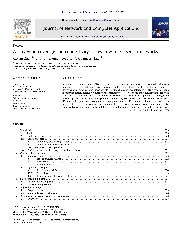摘要
A wireless sensor network (WSN) is composed of a group of small power-constrained nodes with functions of sensing and communication, which can be scattered over a vast region for the purpose of detecting or monitoring some special events. The first challenge encountered in WSNs is how to cover a monitoring region perfectly. Coverage and connectivity are two of the most fundamental issues in WSNs, which have a great impact on the performance of WSNs. Optimized deployment strategy, sleep scheduling mechanism, and coverage radius cannot only reduce cost, but also extend the network lifetime. In this paper, we classify the coverage problem from different angles, describe the evaluation metrics of coverage control algorithms, analyze the relationship between coverage and connectivity, compare typical simulation tools, and discuss research challenges and existing problems in this area.
- 出版日期2012-3
- 单位河海大学
